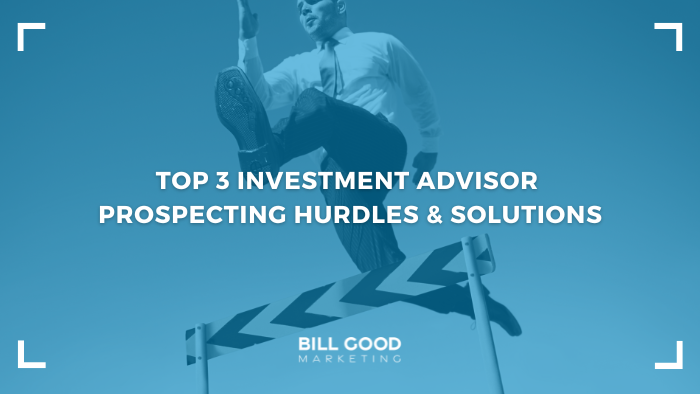
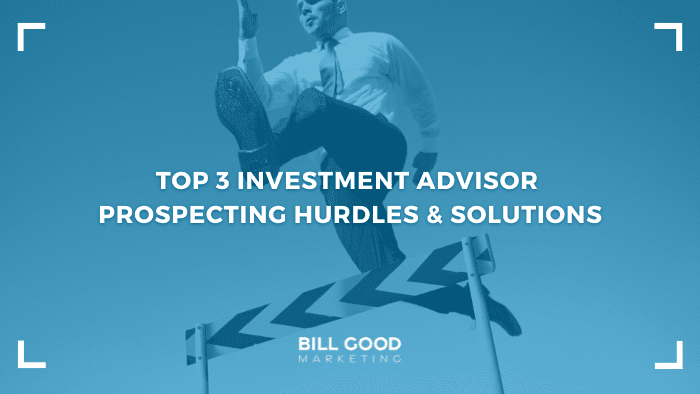
Top 3 Investment Advisor Prospecting Hurdles & Solutions
Presumably, you are reading this article because you’re interested in financial advisor prospecting. So, before we do anything else, let’s define what prospecting actually is.
The original version of this story was published on ThinkAdvisor®
You spend countless hours helping your clients get ready to retire.
You coach them on how to structure their investments to maintain the lifestyle they desire.
You help them with Social Security, possibly Medicare. You may even offer counsel on where to live.
But what about you?
Almost every advisor I talk to has a single answer to this question: “When do you plan to retire?”
“They will carry me out of here. I love what I do.”
That’s all well and good, but sooner or later the inevitable dynamics of life take over. You will decide to retire, or you will have to retire.

This is where you start.
There is a very rough formula in the independent/RIA sector to determine the value of your business. The wirehouse firms each have their separate formulas. If you are in a wirehouse, you should also use this formula, just to check.
The formula is: 2.2 x T-12 fees + 1.1 x T-12 commissions.
This is not hard. It’s not complex algebra.
T-12 = trailing 12 months.
Let’s say you have a practice with $1 million in gross revenue; $500,000 in fees and $500,000 in commissions.
2.2 x T-12 fees = $1,100,000.
1.1 x T-12 commission = $550,000.
Rough value = $1.6 million or so.
The math obviously is easy. The implications are profound.
By converting to fees, $1.6 million becomes $2.2 million. Again, more or less.
There are challenges here. According to “The State of Retail Wealth Management,” a Mackenzie/PriceMetrix study, fee-based revenue as of 2017 was 63%. Only 46% of households had fee accounts. (I have posted a link to this study on our “FA Retirement Readiness” page, which provides some other interesting benchmarks.)
We have developed a strategy to help you do this. If you are not yet 90%-plus fees and you are over a certain age, it’s important to get on with it for several reasons, not the least of which is that you can improve the value of the company, which sooner or later will be passed on to a family member or sold.
There are many. Let’s concentrate on three.
Your objective in preparing your own retirement is to take steps to ensure the clients remain with the practice. Your buyer or heir’s objective is retaining the clients. That’s what they bought. That’s what you get paid on.
On our FA Retirement Readiness page, I have posted a copy of our justly famous “Client Relationship Retention Formula,” one of the best client management systems in the industry.
I would suggest that you hike over there immediately, download it, study it and get to work.
This is vital. You may have an assistant who has been with you 25 years, and when you leave, he or she will leave. Not good. As you plan for the next 25 years, you may have to build a new team around this person.
Make no mistake about it: In a properly configured financial advisor office, primary relationship management is done by the team. It is a total mistake to think that you, the financial advisor, is the relationship manager. You are the financial doctor.
To the extent you have the right people in the right seats on the right bus going in the right direction, you have an enormous leg up already in client retention. If you don’t have this, you have a lot of work to do to make your business as valuable as possible.
This may seem relatively trivial, but it is not.
In the last several weeks, I’ve seen photos of at least a dozen advisors’ offices. Most of them have a look I would only describe as “modern clinical.” They have gray walls, a desk and two chairs, in some cases, not even a picture of their family on the wall.
On our FA Retirement Readiness page, we have posted a vital document for you, “Staging the Office.”
Your referral prospects are easy. Your client Bob tells his brother-in-law Billy, “Now you go talk to Jim and do what he says. Otherwise, I know you and Marge will buy a boat or something stupid. Here’s his number. Call him.”
Billy walks into your office and says, “Bob told me to talk to you about Marg’s $400,000 inheritance. What should we do?”
Your non-referral prospects are much more difficult today than ever. Proper branding of your office is vital in selling your service as well as selling your practice.


You really have only two scenarios that you can consider for your succession plan.
Scenario 1 = Bring in a family member.
Scenario 2 = Find an outside buyer.
There is a third scenario, however, which you don’t want.
Scenario 3 = Fire sale.
This happens to you when you can’t or don’t want to work anymore, starting tomorrow. It is not really part of a succession plan, but rather is an emergency plan.
Let’s take a closer look at the two succession plan scenarios.


I see this a lot. I see father to daughter, mother to son, uncle to niece or nephew and all other possible combinations.
As a survivor of two decades or longer of hard work, your yearly income is most likely in the top 1%. Depending on where you live, that’s somewhere between $200,000 and $700,000 a year, says the Economic Policy Institute.
These numbers are not at all uncommon for FAs who have been in the industry 20 years or more. (Your chosen successor may have no reasonable possibility to enjoy what you have enjoyed unless they can step into your shoes.)
As we look at this scenario, I want to start with the two basic mistakes I see “seniors” committing.
The senior tells the junior, “I want you to do what I did. It’s important that you know you could do it on your own. So, I want you to cold call for a while, and once you have shown that you can bring in assets, I’ll make you part of the business.”
This almost always fails. Why?
Things are different now than when you came into the business. Back in the ‘80s or ‘90s, it was a 99% transaction heaven. You could open an account with 1,000 shares of a $10 stock. Not a problem. You then would develop the account. That was the game.
But today, especially if you are with a national firm, you don’t get paid on accounts with less than, say, $250,000. This means your 25-year-old child is supposed to sit down with affluent or wealthy prospects and convince them to give an obviously new advisor a substantial part of their net worth.
That’s very, very difficult and almost always fails.
Make your junior a servicing advisor.
This is, frankly, insidious. Your junior passes all the tests, does whatever training the firm has, and you assign him or her the bottom 10% or 20% of the book. He or she is expected to call them, develop them, find additional assets, and if nothing else, stay in touch.
I have watched countless numbers of these arrangements fail. After a couple of years, what you have is an advisor with a “servicing mentality” — not a “sales mentality.” And when the former sets in, it is virtually impossible to break.
If your junior servicing advisor takes over your business, he or she has just inherited a dying business — because they don’t know how to reach out and find someone beyond your centers of influence who can bring in fresh assets.
Because I’m in a good mood, I’m posting a copy of my “Senior Junior” partnership document on our FA Retirement Readiness website. If this is the scenario you would like to pursue, you need to go download this, absorb it and implement it.
There is certainly a movement in the industry to buy up practices of retiring advisors. Some of these are being snapped up by large RIAs. Others are being purchased by FAs who have decided the best way to grow a business is to just go buy one.
You have several challenges to make this work. But make no mistake about it: It can work. Obviously, you need to find the right person. The only guidance I can give you in this regard is to rely on the salesperson skills you’ve acquired over a business lifetime.
You have developed a sense of people. When talking to a prospect, you may get little second-thoughts rattling around the back of your mind. You have probably learned to listen to these. And so, you don’t pursue what otherwise looks like a good prospect.
It’s the same with finding the right person to take over your business. Listen to those second thoughts.
Now get a price. You can certainly use the rough formula I gave you, but you should get an appraisal of your business. While you could probably go to a local CPA firm, you could also turn to an organization like FP Transitions, for instance, to do a business appraisal. This group also works as a broker and helps advisors buy and sell practices. So, it knows prices and can therefore provide an appraised value based upon actual selling-price data.


Most people do not resist change as such. They do resist dramatic change.
You find a buyer. You make the announcement. You’re gone.
Not a good strategy at all.
Best bet is once you finalize your deal, you must stick around for a year. Again, you are selling clients with assets — not just assets. There needs to be a gradual hand-off.
But there should be a hand-off. I counsel my clients who are selling a business or buying one that the seller should, at a point, leave and be done with it.
Go on and create version 2.0 or 3.0 of your life.


Bill Good is the founder and chairman of Bill Good Marketing. His latest book, “Hot Prospects,” is No. 88 on the 96 Best Prospecting Books of All Time list and is available on Amazon. He created the Bill Good Marketing System and has been named one of the industry’s top five coaches.


Presumably, you are reading this article because you’re interested in financial advisor prospecting. So, before we do anything else, let’s define what prospecting actually is.


Cold-calling is NOT a “try it once and hope it works” endeavor. It requires testing and tweaking to learn what works for your market, your list, and for you. Cold-calling is NOT for advisors who fear rejection. You will get a lot of rejections when you cold call – but if you follow best practices, it won’t matter, because the number of new leads you…
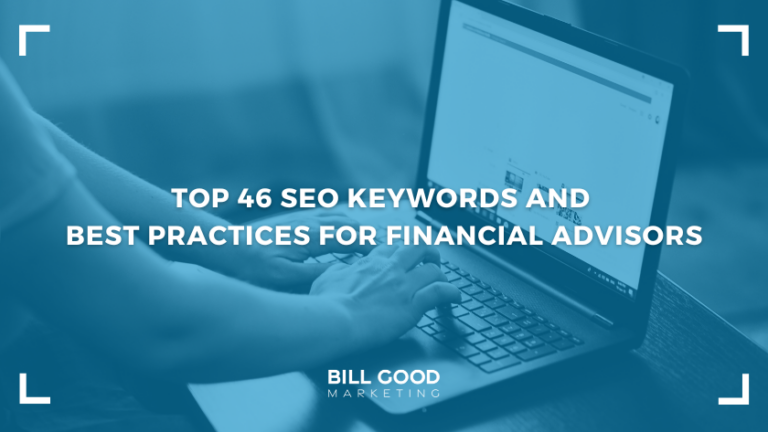
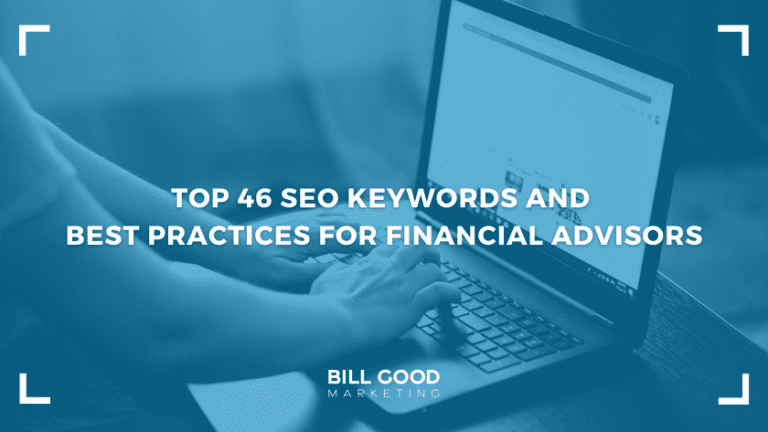
Staying on top of the best keywords for your business is essential for effective SEO. As we’ve discussed, these keywords help connect your website with the people who are searching for the services you offer. Based on insights from Google’s Keyword Planner, here are the 46 most relevant keywords for financial advisors…
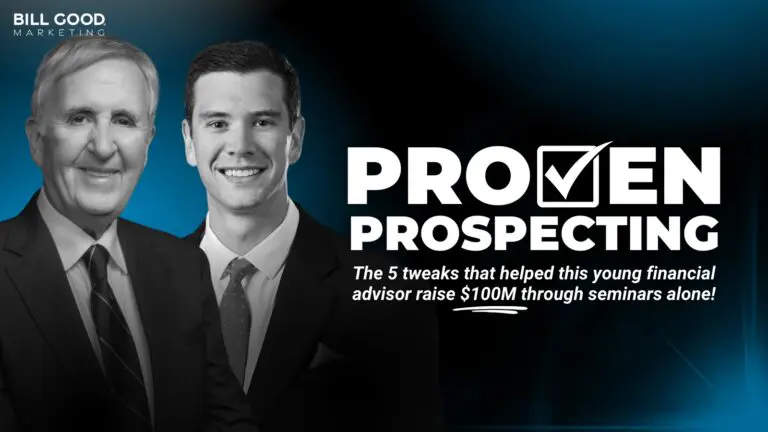

When Neil McPeak Jr. — CFP®, CEPA® — joined his father’s practice fresh out of college, he was given one instruction: Learn to prospect. In other words, want to manage your own assets? Go out and find them yourself. (That wasn’t on his college curriculum…


HNW clients. You want ‘em. Everyone wants them. And you’ve likely gotten a dozen emails this month alone on how easy it can be to get more. But whether you’ve been in this industry for 1 year or 30, you know the truth…
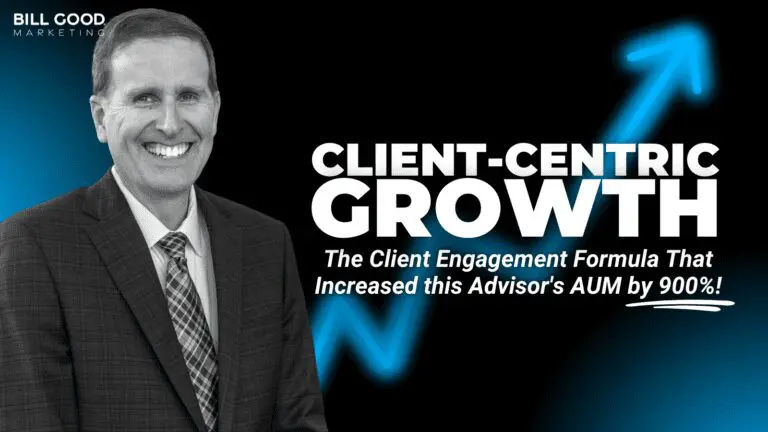
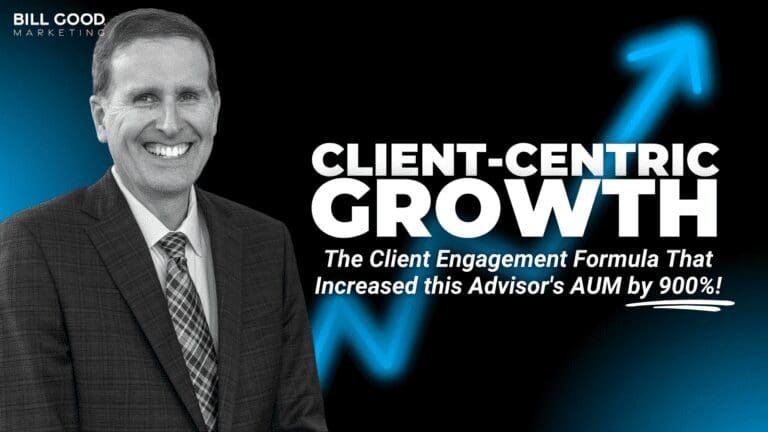
Are you ready to unlock the formula that skyrocketed a Texas advisor’s AUM by 900%? Join us for an exclusive, one-time webinar revealing the strategies Mark Trice used to transform his $14M practice into a $134.4M business…